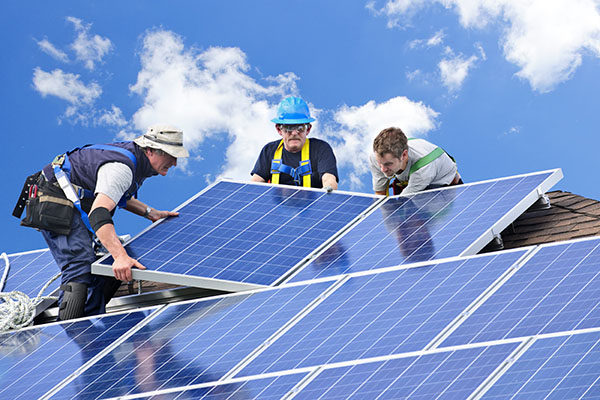Solar panels, also known as photovoltaic (PV) panels, convert sunlight to electricity and are thus often used for residential or large-scale power generation. Most PV panels presently in use have a life expectancy of 30 years. Because the bulk of functioning PV panels were installed after 2010, the current waste stream is not significantly large to support dedicated recycling facilities. By 2050, however, 80 million metric tons of PV panels could reach the end of their lifespan. As a result, dedicated recycling facilities need to be operating before 2040 to avoid adding to the already growing mountain of electronic waste that is not recycled. One detail that has yet to be resolved is how to recover all of the materials during PV-panel recycling, keeping in mind that there is also an environmental impact to recycling. Researchers reporting in the journal Nature Energy (July 2020) say that now is the time to plan and develop processes for maximizing material recovery and minimizing environmental impact caused by disposal through landfilling. See also: Recycling technology; Solar cell; Solar energy

In terms of their material composition, PV panels consist of an aluminum frame; a protective glass cover sheet; a semiconductor material such as silicon or cadmium telluride, which makes up the solar cells; a transparent encapsulant (such as ethylene vinyl acetate copolymer) to hold the solar cells in place; a polyester or fluoropolymer backing (backsheet); and a metal or plastic junction box that houses the wiring for interconnecting PV panels. PV panels may also contain small amounts of indium, silver, tin, and lead, which—along with cadmium—are considered toxic to human health and the environment. Of these materials, the most valuable are silver, aluminum, copper, and silicon. The hardest to recover are trace amounts of indium, tin, lead, and other toxic elements found in the solar cells. Of all these materials, fluoropolymer backsheets are potentially the most troublesome, because currently no recycling methods exist to break down fluoropolymers. See also: Aluminum; Cadmium; Copolymer; Environmental toxicology; Fluorocarbon; Glass; Indium; Lead; Polyester resins; Silicon; Silver; Tin
One aspect of the durability designed into PV panels is that the panels are not easy to take apart to recover the individual materials. Most recycling processes begin with the easy part: removing the metal frame and junction box. This is followed by shredding the panel, sorting out and recovering the bulk components (glass, silicon, and metals), and then recycling these materials. Up to 85 percent (by weight) of the panels can be recycled in this manner. To recover the remaining 15 percent of the panels going forward, PV panels will need to be designed for reparability, reusability, and recyclability. In other words, non-recyclable, hard-to-recover, and toxic materials should be avoided. Sustainable PV recycling processes would ensure that PV panels would become a source of valuable materials and not a waste product at the end of their life. See also: Sustainability





